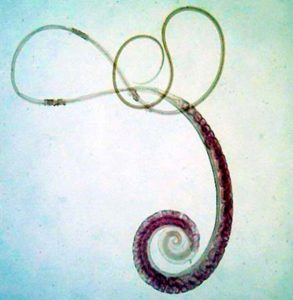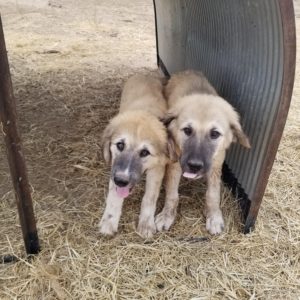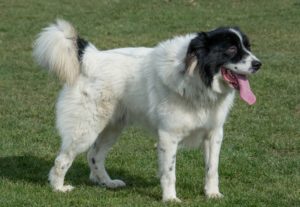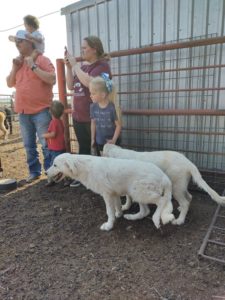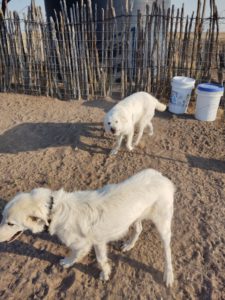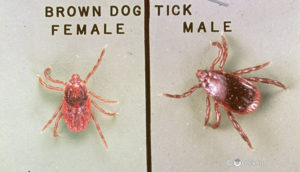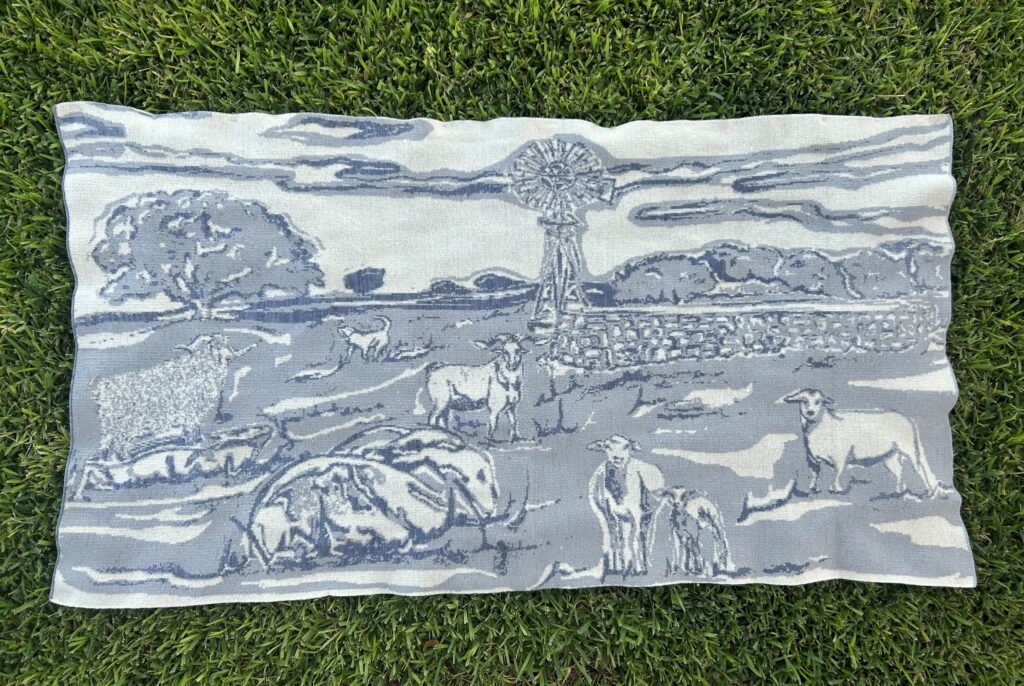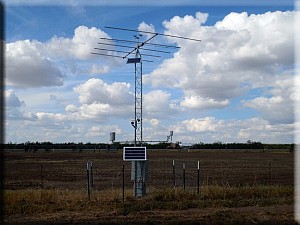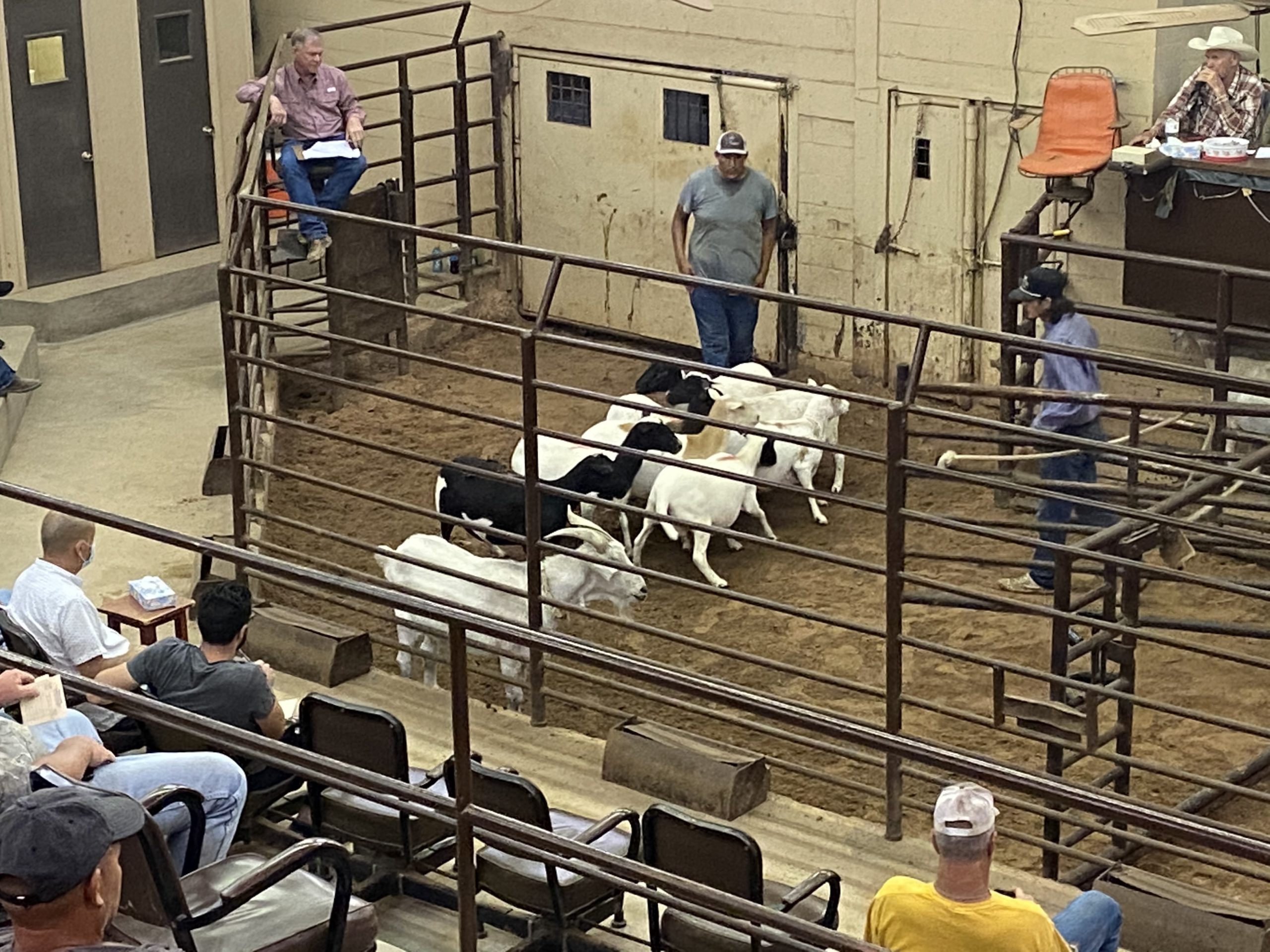Home & Work
The boys and I were busy packing boxes to move to a new house in town at the end of August. We sold our place outside of Grape Creek and moved to a smaller home in San Angelo. This is going to be a big adjustment for the three of us and our two dogs. My registered border collie, Booker, and my Pyrenees Maremma cross, Brutus, have never lived in town. It is important to make changes with your LGDs slowly over time. Things like adding or deleting livestock that the dog is accustomed to may cause behavior problems.
We were busy at the AgriLife Center last month. Our maintenance crew and I installed water lines to all the bonding pens, so I do not have to haul water out to the stock and pups every other day. That is a huge time saver for me. We also removed our old kennel, poured a concrete slab for the new one, and started fabricating the new kennel structure. The project should be done by the middle of September. We also held the annual Sheep & Goat Field Day virtually this year, which included a presentation of the LGD program. Check the Facebook page for more information regarding the LGD Field Day on September 25th in Fredericksburg.
Internal Parasites – Gastrointestinal
This is the second part of a multi-part series on canine gastrointestinal parasites. The most common type of internal parasites that an owner of LGDs will encounter are worms. There are five main types of worms that your LGD may encounter: roundworms, hookworms, whipworms, tapeworms and flukes. Last month we covered hookworms and this month we will focus on whipworms in LGDs.
The whipworm parasite is generally transmitted to dogs when they ingest infested food or water. Although whipworms can be contracted from other infected animals as well. Adult whipworms in dogs are typically found in the colon and cecum which is a part of the large intestine. They attach themselves firmly to the intestinal wall. Eggs are passed in the feces and become infective in about 4 to 8 weeks. Under ideal conditions, whipworm eggs can remain dormant in the environment for several years in moist climates. Once infective eggs are ingested by the host, the larvae hatch and develop in the small intestine and then move to the cecum and colon, where the adults mature in about 11 weeks and will remain there for up to 16 months. No signs are seen in light infections, but as the number of worms increases the cecum and colon can become inflamed, which can cause diarrhea and weight loss in the dog. Fresh blood might be seen in the feces in heavy infections and anemia may also result.
Since whipworm eggs take a month to become infective, whipworms can be controlled with good sanitation in a kennel situation. Prompt removal and proper disposal of feces is critical in confined areas. Whipworms are susceptible to drying; therefore, keeping the dog in an environment that is clean and dry reduces the risk of infection considerably. A variety of medications—including some monthly drugs that prevent infections with other parasites like heartworms—are available for treating whipworm infections. Your veterinarian will choose one that is appropriate for your LGD and its environment.
Sources: https://www.merckvetmanual.com/dog-owners/digestive-disorders-of-dogs/gastrointestinal-parasites-of-dogs?query=canine%20internal%20parasites#v3202812, https://www.merckvetmanual.com/digestive-system/gastrointestinal-parasites-of-small-animals/whipworms-in-small-animals?query=canine%20whipworms, https://www.petmd.com/dog/conditions/infectious-parasitic/c_multi_trichuriasis
LGD Puppy Bonding Project
We will be starting our second round of the Bonding Project Trial this month. We have added a new phase to the project, and we will have a total of eight dogs involved this time from two different breeders in Texas. We will be bonding two of the dogs within close proximity to our Center and the others will be bonded in a pen at the furthest end of our pastures, over 1 mile away. The goal of this project is to see if there is a difference in roaming behavior later in life of dogs bonded to animals nearer to human activity than dogs bonded further away.
The Duke Boys that are being trained for a cooperating producer are coming along well. They will be leaving once the new set of puppies arrive for the Bonding Project. The Legends of Country Music are also doing well and will be moving to our research ranch in Menard at the end of September. They will 8 months old by that time and ready to start working under the supervision of our two adult dogs with the sheep there. Willie will be returned to his breeder as his right front leg is still causing him to limp and move around slowly. He will have a small place to guard and receive the daily care he needs. I will miss his friendly and happy personality.
The Stooges are all still doing well at the cooperating producers ranch. The hot wire treatment during bonding has worked very well for those dogs. According to the producer they are always with stock and have not left the herd at all. GPS data for over 60 days shows that he is correct about that.
The Superheroes are also doing well, but Thor and Hulk routinely leave their pastures to guard other stock. Thor also visits his old friends, the Stooges, once in a while. In their defense, the fencing at that ranch is old and holes develop regularly which does not help keep the dogs and stock where they are supposed to be. However, it does show a difference in the bonding project criteria since these dogs did not have hot wire in their pens when they were reared and bonded at the Center.
LGD Breed Spotlight – Karakachan
The Karakachan dog is likely a breed you have not heard much about as they are rare in the United States. Native to Bulgaria, it is difficult to trace their exact
origin as they are an ancient breed. It is widely believed that they originated from Central Asian herding dogs. They derive their name from a native group of shepherding people called the Karakachani, who lived in Greece, Bulgaria, and Albania. These nomadic people put great emphasis on animal breeding, as well as preserving, the Karakachan dog.
The dog breed’s prime purpose has always been to guard livestock on mountains. They are known for their courage when confronted with such threatening predators, like bears and wolves, and will not hesitate to defend their flock. Due to their sheer size, as well as their inherent loyalty and territorial behavior, the Karakachan has also been used for many years as a patrol dog.
The Karakachan is a remarkably large and impressive dog, reaching heights of 25-30 inches, weighing between 88-135lbs. They are double coated and always have a thick, full undercoat, but their straight topcoat is variable among the breed and may be short or long. When long, it should reach lengths of over 4 inches. Their coat color will be white with brown, or white with black, or white with both black and brown. Large, well defined colored spots are preferred on the dogs. Most dogs have black noses, but red noses are seen in red or brown dogs.
The Karakachan is dedicated to its role and is hardy, diligent, and hard-working. They are always alert, patrolling and guarding their flock. They will bark to warn off predators. They are less likely to roam than other LGD breeds and will move their stock to safe areas if they perceive a threat. Any perceived threat to their herd will be met with aggression. They are a breed that will bond closely with their stock and will quickly become very protective of them. They need extensive socialization when young to encourage them to be tolerant of strangers within their area, as they will instinctively be very wary of any newcomer.
They were developed throughout the years for high levels of stamina and the ability to patrol a flock all day and jump to their defense when needed. While they are known to be an intelligent breed, the Karakachan survived by itself for a long time out on the remote Bulgarian mountains and can thus be strong-willed when it comes to training. They require a confident and experienced handler who will not allow them to get their own way. This is particularly important due to their strength and potential for aggression when they feel threatened. Positive reinforcement works best when training the Karakachan.
Sources: Dohner, Janet Vorwald. Farm Dogs: A Comprehensive Breed Guide to 93 Guardians, Herders, Terriers, and Other Canine Working Partners. Storey Publishing, 2016, https://www.dogzone.com/breeds/karakachan/ , http://www.karakachanusa.org/
Breeder Profile
This month’s LGD breeder who is using LGDs in his operation is Michael Annuziato from South Plains, Texas . He owns and operates the A Bar Z Ranch.
Q: Describe your operation/ranch.
- How many LGDs do you currently own?
- Explain your LGD program.
A: We have a small breeding operation of sheep, goats, alpacas, chickens, ducks, turkeys, quarter horses and cattle. We have six adult LGDs and four pups that
are 5 months old. There are currently dogs with different animals and at different locations, usually in pastures of two to three dogs guarding.
Q: What got you started in breeding LGDs?
A: We had two old Maremmas that were extremely good guardians that died on our property. We had a difficult time replacing them. I was working for a neighbor taking care of his sheep when he suggested that I breed and raise some for him and sell the rest.
Q:How long have you bred LGDs?
A: I have been breeding and selling livestock guardian dogs for seven years now.
Q: Do you prefer a specific breed of LGD?
A: Yes, I prefer Maremmas. They are originally from Italy. They seem to stay with livestock better than other breeds I have used.
Q:What breed of LGD do you raise?
A: I raise purebred Maremmas. I feel purebreds do better than mixing breeds to form composites. You do not always end up with the best of the breeds in pups when you mix them together. There is not enough scientific information available on purebred LGDs, let alone mixed breeds of dogs to know what traits are likely to show up in a specific breeding cross.
Q: Do you have an LGD mentor?
A: My mentors have all moved on, but they were there to help me start 15 years ago. I’m always available to my customers to answer questions and provide advice on the dogs. Its important to have a mentor to talk to when you are just starting out with the dogs. You breeder is a great choice since they know their specific line of LGDs.
Q: What is the one thing you wish you knew before starting to breed LGDs?
A: The special thing I did in the beginning was to research the breed and find out all I could about them. I would highly recommend that people that are looking into getting livestock guardian dogs do as much research as possible on the dogs. They should look for a breeder that raises the breed of dog that they are wanting. They want to make sure that the breeder bonds the dogs to the same type of livestock that the producer has at his ranch
Q: What is the number one thing you would recommend to a new LGD user?
A: I would highly recommend that people that are looking into getting livestock guardian dogs do as much research as possible on the dogs. They should look for a breeder that raises the breed of dog that they are wanting. They want to make sure that the breeder bonds the dogs to the same type of livestock that the producer has at his ranch.
Q: What is the number one thing you recommend to a new LGD user?
A: Do research on the LGDs. Interact with other LGD owners, find a right-hand man that will be very loyal and help you.
Q: What is your favorite LGD or LGD story and why?
A: The Maremma is my favorite, very loyal, and passionate about their job. They tend to stay with the stock, bonding and protecting them. They are not an overly aggressive LGD. They have a large deep bark that warns the enemy to stay away. They can be, and I recommend it that they be, socialized with family. This also helps when you must take them to the vet for shots etc. They are highly intelligent! They are very loving and gentle with our children and grandchildren.
LGD Timely Tips
Every Tuesday check out our Facebook page @TAMUlivestockguardog for Tuesday’s LGD Tip of the Week!
- Dogs heavily infested with brown dog ticks often require blood transfusions to recover. Routine use of tick control keeps the situation from getting out of paw
- Hepatozoonosis is a tick-borne disease that can cause weight loss, fever, lethargy, and muscle pain. Transmission of Hepatozoonosis occurs by ingestion of an infected tick and not by a tick bite.
- You may not always spot a tapeworm in pet’s feces after treatment, but this does not mean the pet was not infected. The treatment targets the tegument or covering of the worm, which may cause it to be digested by the animal instead.
Sources: Bayer Animal Health Companion Vector Borne Diseases Calendar 2019
To provide feedback on this article or request topics for future articles, please contact me at bill.costanzo@ag.tamu.edu or 325-657-7311.
Follow us on Facebook: https://www.facebook.com/TAMUlivestockguarddog/
Follow us on YouTube: https://www.youtube.com/channel/UCF7YbP6bNDV7___6H8mifBA

